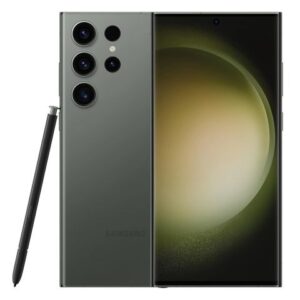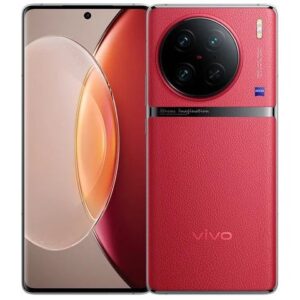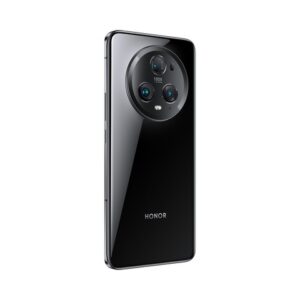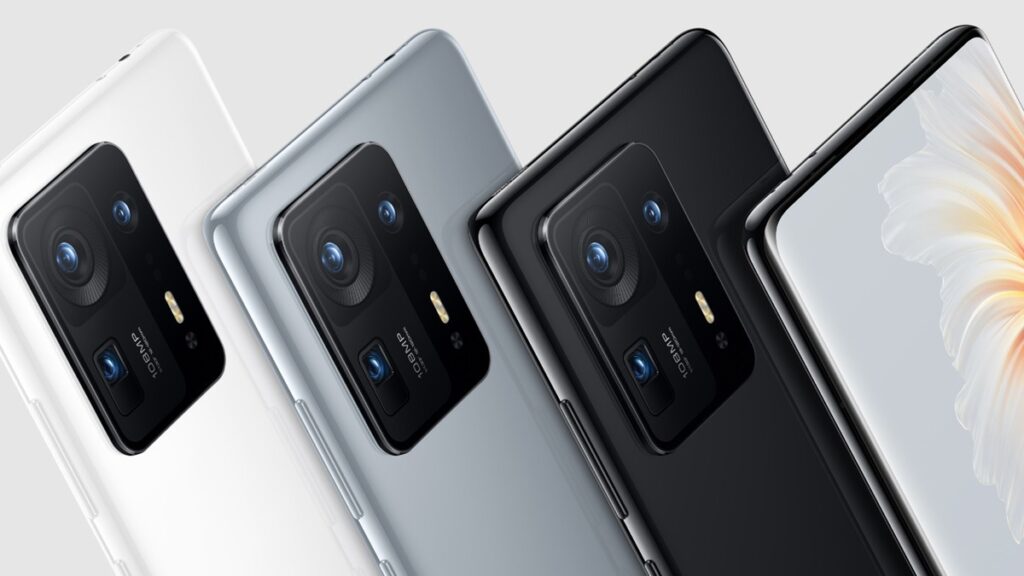Our Picks For The Top Camera Phones in 2023
Google Pixel 7 Pro
The Google Pixel 7 Pro has a dazzling camera array that offers three rear sensors and a suite of excellent software tricks for further enhancements. The design also looks great, and there’s a large and lush screen to enjoy visual content.
Google’s line of Pixel phones has been revered from its outset for its photographic ability, and the brand’s latest flagship upholds this fine tradition with aplomb. The Pixel 7 Pro has a triple rear camera, led by a 50MP main sensor with an f/1.9 aperture, and complemented by a 12MP ultrawide lens and a 48MP telephoto zoom sensor which boasts 5x optical zoom. There’s a 10.8MP ultrawide selfie camera on the front, with an f/2.2 aperture.
Taking photos in auto mode is easy — there’s no need to adjust ISO levels or exposure to get the perfect shot. Simply put, this phone makes it look like you know what you’re doing with the camera. With this main sensor, colors are vibrant without giving in to the oversaturation that often characterizes snaps from rivals such as Samsung. Plus, images retain plenty of detail without appearing to be artificially oversharpened. Low-light photography is better than ever with Night Sight, which works quickly to pull color and detail into snaps taken after dark.
The same sensor is still used to great effect to take shots at 2x zoom, but if you want to go further, then you can count on the telephoto, which offers 5x zoom and is the key hardware difference between this Pro model and the standard Pixel 7. The telephoto retains great detail at 5x, and with Super Res Zoom, you can push it even further with enhanced digital magnification if you want to get closer still to your subject. In our experience, this worked reasonably well in good sunlit weather conditions until you hit its maximum 30x limit.
The ultrawide lens adds another layer to the versatility, as the 126-degree field of view makes for a near-fisheye effect. Although this enables macrophotography, the results aren’t quite up to our usual expectations. Thankfully, selfies are perfectly detailed, and the option to take ultrawide pictures from the front-facing camera is nice to have, as it’s far from the default across most Android phones. However, the nighttime performance from the front-facing camera isn’t up to the same standard as the rear camera system.
Regarding video capture, we found that standard 1080p and 4K recordings look good, and the OIS really helps things stay steady. However, we were disappointed by the lack of vibrancy when recording with 10-bit HDR (left disables by default), and the cinematic mode is just a gimmick.
Along with the impressive hardware, this smartphone also grants you access to Pixel-exclusive software features such as Photo Unblur, which helps you to correct your snaps after you’ve taken them. This works very well and gives an extra edge to the Pixel package that sets it apart from the competition. And, oh yeah, did we mention it’s a good phone overall? On top of the great camera, this device has a large screen and long-term software support — just keep in mind that its

Samsung Galaxy S23 Ultra
It’s hard to fault the Samsung Galaxy S23 Ultra, which delivers in all the key areas. It has an excellent camera, an immersive screen, awesome processing power, and a large battery. However, it is a very expensive proposition.
Samsung’s latest flagship excels in all areas, and yet its camera remains the star of the show. Four lenses are on the back of this one, including a lead sensor with an incredible 200MP resolution. Alongside it are two 10MP telephoto sensors for 3x and 10x periscope shots, while the entire package is rounded out with a 12MP ultrawide lens.
Despite these improvements, this year’s results weren’t exactly revolutionary compared to Samsung’s previous flagship. Images do retain their trademark oversaturation — colors such as greens and blues seem particularly over-enhanced — but many users may prefer this effect to drab-looking realism.
By default, images taken with the main sensor are binned to 12MP, making file sizes easier to handle while images retain their punch. However, should you wish to capture full-resolution 200MP images, the option is there with the camera’s Pro mode. Night photography looks good, though like its predecessor, it tended towards oversaturation again, and we generally preferred the Google Pixel 7 Pro results.
However, one major flaw of the camera is its shutter lag. For example, faces in motion appeared blurred at a concert due to the unnecessary long exposure. The moon shot feature, which allows you to take a photo of the moon, which is then AI-enhanced to actually look like, you know, the moon, has been criticized by many across the web, but we didn’t find it too aggravating.
The selfie camera produces good detailed shots, but we would have preferred taking an ultrawide picture from this camera to squeeze a larger group of people into the frame. It’s not just in photography where the Samsung Galaxy S23 Ultra excels; it’s the whole package. It delivers across the board with a beautiful screen, excellent performance, and a large battery. The major downside is just how expensive it is.
Google Pixel 6a
For its price, you won’t get a better smartphone camera than that of the Google Pixel 6a. Moreover, it still packs in good performance standards and fantastic software, making it a very attractive buy, especially if you hope to save some cash.
Google’s 2022 budget phone, the Pixel 6a, still packs a good punch today, and thanks to a post-Pixel 7a price cut, its more tempting than ever. It has a dual rear camera system, with a 12.2MP main sensor and a 12MP ultrawide, while there’s an 8MP sensor on the front. For $350 — or less on sale — you’re unlikely to find a better camera.
These sensors have been fine-tuned so that your shots will be packed with detail until they’re fit to burst, but the software is the true star of the show here. The efficient Tensor chipset quickly enhances images taken under difficult conditions, such as those taken at night or even underwater, and the results are frankly very difficult to beat. You also have access to some of our favorite Pixel camera features, such as Real Tone (for accurate skin tone capture) and Magic Eraser (which allows you to scrub out unwanted objects). Despite its affordable price point, it is undoubtedly a true Pixel.
However, as you probably noticed from the suite of lenses on this handset, there’s no telephoto sensor. So you’re fully reliant on digital zoom from the main camera to get closer to your subject. This works fairly well up to 2x zoom, but we’d advise you not to go further.
The video recording quality is acceptable, though we noticed the phone getting hot after ten minutes of 4K capture. The Pixel 6a is an exceptional smartphone for its price, even beyond the camera, as you’ve got that great Pixel software, a nice design, and good battery life. We strongly recommend it.

Xiaomi 13 Pro
The Xiaomi 13 Pro boasts flagship capabilities, especially regarding the impressively versatile camera system, the processor, and the fast-charging battery. However, it’s very pricey, and the software was sometimes sub-par.
You’ll find a trio of 50MP lenses on this phone’s back, and as you can imagine, this adds up to a particularly versatile shooting experience.
The main sensor is fantastic, delivering an authentic optical bokeh effect that makes shots look a little more like a DSLR took them rather than just a smartphone. Xiaomi’s partnership with Leica also reaps the rewards of the latter’s color science so that images look very well-balanced. The 3.2x zoom telephoto is another strength; you can use it as a macro camera. Aside from night mode, where the phone understandably takes a little longer to process images, the feedback is instantaneous.
The selfie camera, which has a 32MP resolution, is also very capable, whether you’re using it for solo shots or group pictures, as it can expand the frame to accommodate more subjects.
On top of the excellent camera, the Xiaomi 13 Pro has brilliant battery life, fast charging, and high-quality hardware. The software can be buggy at times and expensive, but it’s still a very good smartphone representing strong progress on its predecessors.

Vivo X90 Pro
The Vivo X90 Pro makes the most of its 1-inch sensor to deliver excellent photographic results. The phone itself looks great too, and its rate of charging must be seen to be believed. It’s just a shame the software isn’t on the same level.
The Vivo X90 Pro offers the same 1-inch main sensor as the Xiaomi 13 Pro, and once again, it proves itself to be a delight to use. Here it is accompanied by a 50MP telephoto sensor with 2x optical (dubbed a portrait lens) and a 12-megapixel ultrawide lens, while the selfie camera has a 32MP resolution.
There were admittedly a couple of teething problems when we first started with this camera — the watermark on photos and beauty mode for portrait shots are two default options we recommend disabling as quickly as possible. But once we got past those obstacles, we had a blast.
The Zero Shutter Lag feature takes instantaneous photos when the lighting is good so that you won’t miss out on capturing the perfect moment as it happens. The sensor is of such high quality that the natural depth of field effect gives your photos a professional look; the portrait camera is also great, but its bokeh effect is admittedly software-assisted rather than completely natural.
Another strength of this phone’s camera system is its night mode; it can take very fast pictures, capturing light from impossibly dark scenes. The astrophotography mode also promises better results than rivals when photographing the night sky, and there are many other handy modes on top of these (including Auto HDR and Zeiss Natural Color) that will keep you experimenting with the camera.
Our biggest disappointment with the X90 Pro camera is that the optical zoom caps out at just 2x, whereas we’d have preferred an option to go to 3x or 5x to get that bit closer to the subject without compromising on quality.
It has to be said, though, that besides the camera — and its incredible fast charging – the X90 Pro is a hard sell. For one thing, it’s not that widely available, and the software can be irritatingly buggy too.

Honor Magic 5 Pro
The Honor Magic 5 Pro has an impressive camera system, but that’s not all. The screen and battery life are also good reasons to consider the device, though the software can be inconsistent.
The Honor Magic 5 Pro boasts a triple 50MP camera setup, and we found it a big upgrade from the previous generation. Including a 122-degree ultrawide lens and a telephoto lens with 3.5x optical zoom add so much versatility, and you can get class-leading, high-resolution imagery from any of these sensors.
No matter the lighting, you’ll get good images from the camera system due, in part, to Honor’s fusion technology that combines captures from different lenses to create the final result. However, occasionally this can lead to some inconsistencies in some picture details, where finer textures, such as hair or leaves, are not properly distinguished.
We also found strange results from the 100x zoom feature, where images looked good through the viewfinder yet were unusable when taken as still images.
Nonetheless, this is a very strong camera phone that comes close to hitting the heights of the Xiaomi 13 Pro and the Vivo X90 Pro. With improvements to the screen and the design, this is undoubtedly a good smartphone despite its janky software.
Which option is right for me?
When looking for a smartphone that excels at photography, there are a few things to remember. Firstly, of course, there’s the price. It’s all too easy to exceed your budget when perusing the premium models. Secondly, think about the kind of lenses you want to have on your phone. If a solid wide-angle primary sensor is all you need, then that’s fine — but if you want to zoom in, then you might want to look for a phone with a dedicated telephoto lens, and if you want to capture larger subjects, then an ultrawide might suit your purpose better.
Which camera phone should I buy?
Overall, the phone we most strongly recommend is the Pixel 7 Pro. This device doesn’t break the bank but has an excellent camera system that produces highly attractive photos under all sorts of challenging lighting conditions. What’s more, the software tricks can help you correct photos in a couple of easy steps.
If money is no object, we suggest you look at the Samsung Galaxy S23 Ultra. Not only does this handset have a brilliant camera, with a 200MP main sensor and particularly strong telephoto lenses, but pretty much everything else about it is top-level, too, including the processor and the screen.
If you can’t afford a flagship phone, we reckon your best bet is the Google Pixel 6a. This clever little smartphone can still take wonderful images and has the software smarts of its siblings, but it’s more affordable, too, even though it has a smart design that belies its price.
Google Pixel 7 Pro
The Google Pixel 7 Pro has a dazzling camera array that offers three rear sensors and a suite of excellent software tricks for further enhancements. The design also looks great, and there’s a large and lush screen to enjoy visual content.

